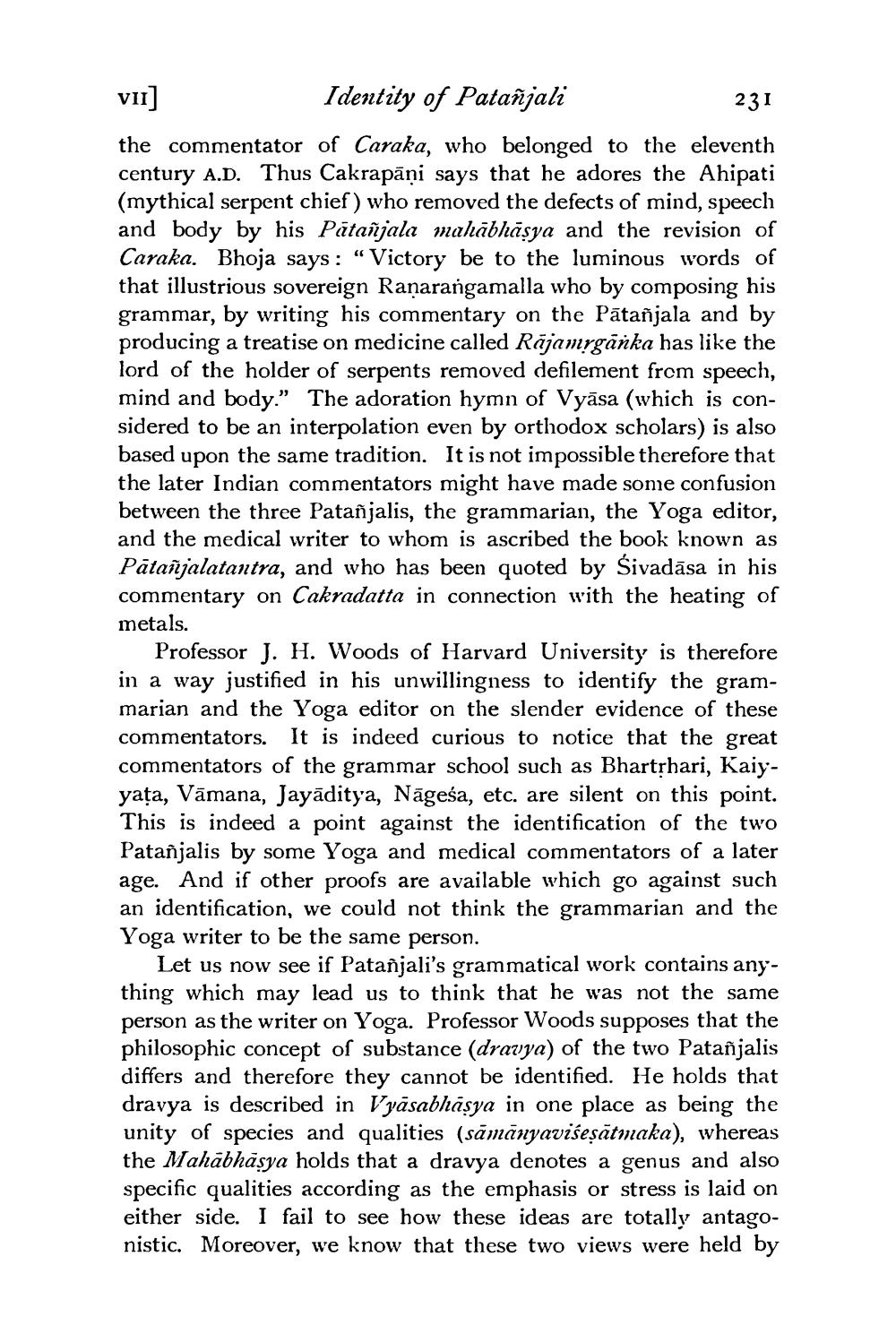________________
VII]
Identity of Patanjali
231
the commentator of Caraka, who belonged to the eleventh century A.D. Thus Cakrapāņi says that he adores the Ahipati (mythical serpent chief) who removed the defects of mind, speech and body by his Patanjala mahābhāṣya and the revision of Caraka. Bhoja says: "Victory be to the luminous words of that illustrious sovereign Raṇarangamalla who by composing his grammar, by writing his commentary on the Patañjala and by producing a treatise on medicine called Rajamṛganka has like the lord of the holder of serpents removed defilement from speech, mind and body." The adoration hymn of Vyasa (which is considered to be an interpolation even by orthodox scholars) is also based upon the same tradition. It is not impossible therefore that the later Indian commentators might have made some confusion between the three Patanjalis, the grammarian, the Yoga editor, and the medical writer to whom is ascribed the book known as
Patanjalatantra, and who has been quoted by Śivadāsa in his commentary on Cakradatta in connection with the heating of metals.
Professor J. H. Woods of Harvard University is therefore in a way justified in his unwillingness to identify the grammarian and the Yoga editor on the slender evidence of these commentators. It is indeed curious to notice that the great commentators of the grammar school such as Bhartṛhari, Kaiyyața, Vamana, Jayāditya, Nāgeśa, etc. are silent on this point. This is indeed a point against the identification of the two Patanjalis by some Yoga and medical commentators of a later age. And if other proofs are available which go against such an identification, we could not think the grammarian and the Yoga writer to be the same person.
Let us now see if Patanjali's grammatical work contains anything which may lead us to think that he was not the same person as the writer on Yoga. Professor Woods supposes that the philosophic concept of substance (dravya) of the two Patanjalis differs and therefore they cannot be identified. He holds that dravya is described in Vyasabhaṣya in one place as being the unity of species and qualities (sāmānyaviseṣātmaka), whereas the Mahabhaṣya holds that a dravya denotes a genus and also specific qualities according as the emphasis or stress is laid on either side. I fail to see how these ideas are totally antagonistic. Moreover, we know that these two views were held by




